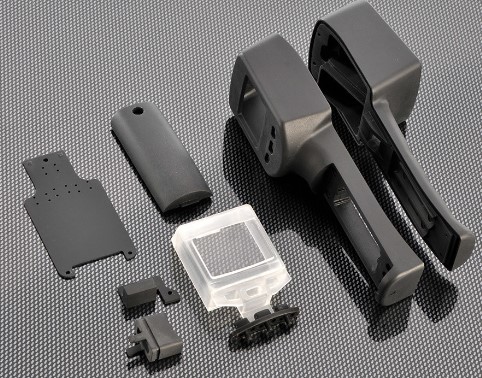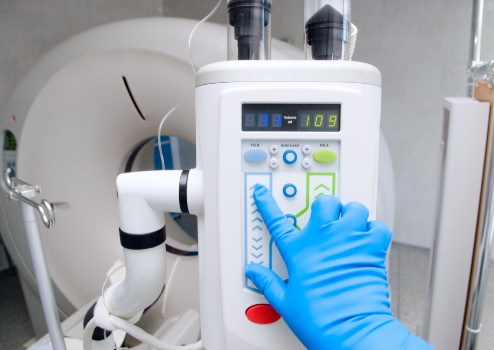Why Custom Machining Medical Parts?
 Recently, cutting tool concepts have been introduced that increase efficiency and optimize productivity in small part machining for the medical industry. As sliding head machines evolve for small CNC machined parts, so do cutting tools to deliver the performance required for maximum machine utilization. In UYEE industry, many tool areas have reached new levels of performance, of which rotary head threading and high-pressure coolant turning are two excellent examples.
Recently, cutting tool concepts have been introduced that increase efficiency and optimize productivity in small part machining for the medical industry. As sliding head machines evolve for small CNC machined parts, so do cutting tools to deliver the performance required for maximum machine utilization. In UYEE industry, many tool areas have reached new levels of performance, of which rotary head threading and high-pressure coolant turning are two excellent examples.
The growth in the production of large volumes of long and thin screws in high performance metals, such as bone screws, evolves in parallel with the competitive pressure of their manufacture. This is the typical case for providers in the UYEE industry, where bone screws, for example, are machined in increasing volumes and for whom rotary head threading is an established method. The inherent stability of the process makes it the method of choice for high volume machining and demanding metals.
Choosing the Right Cutting Tools
The main benefit is a longer tool life, which means less Medical device prototyping machine downtime during the production process. In addition, the robustness of the cutting edge line can be optimized to achieve sharper and more reliable edges. Taking advantage of advances in other areas of machining, and developing specific index able cutters and inserts for rotating head threading of small CNC machined parts, offers great advantages in the manufacturing economy of CNC medical components.
The developments in inserts have provided the necessary means to achieve a new concept of cutting edges, which takes more advantage of the benefits of threading with rotary head. Coated carbide inserts, for example, offer longer and more predictable service lives, as well as the ability to achieve higher cutting speeds. This has resulted in higher productions and more CNC machined parts within required tolerance and finish levels. New insert grades, such as those with PVD / TiAlN coating, feature a genuine thin coating layer with excellent adhesion to the insert substrate. The grade has proven to be especially advantageous for the sharp cutting edges required for rotary head threading of materials such as those used in bone screws.
The Skills of Milling Medical Components
Operational safety and tool handling are additional essential features for higher performance in rotary head threading. The precision of the tool determines the quality of the insert seat, the rectification of the insert and the ease and reliability of the correct location of the insert at all times. Newly developed insert clamping for rotary head threading mills has improved cutting edge positioning accuracy, machining safety, and ease and time of tool change. Also, to ensure the high precision and surface finish required during the process, a smooth tangential cutting action is required.
Today, in rotary head threading, end mills should include precision ground specialty inserts and pre forms should be compatible with most types and brands of tailstock spindle. Despite already being a high-volume production process, meeting higher production and new CNC medical components demands requires new tool technology to achieve more advanced ring concepts in rotary head threading.
In one example of rotary head bone screw threading fabrication, with volumes of around half a million per year, in varied small batches, installing the modern index able insert tool resulted in machining savings that greatly increased manufacturing competitiveness . The long service life of the new tool allowed nine times as many components to be Medical device prototyping machined before having to change the cutting edge, when CNC medical components dimensions began to fall outside tolerance requirements. In addition to eliminating machine downtime, the easy maintenance of the cutter saved a lot of time in the tool room.
The Development of Coolant on Machines
 The coolant supply available in today’s sliding head machines offers new possibilities for optimized small CNC machined parts production. Replacing the conventional flow of coolant in the machining zone with a high pressure coolant system offers many machining advantages. In addition, the introduction of this assisted cutting means does not have to involve complicated and elaborate installations, since there are standard tools for this and the supply of internal coolant is already a very common practice.
The coolant supply available in today’s sliding head machines offers new possibilities for optimized small CNC machined parts production. Replacing the conventional flow of coolant in the machining zone with a high pressure coolant system offers many machining advantages. In addition, the introduction of this assisted cutting means does not have to involve complicated and elaborate installations, since there are standard tools for this and the supply of internal coolant is already a very common practice.
In recent years, high pressure coolant machining has been continuously developed, resulting in today’s efficient concept. The great advantage of this system lies in the optimization of performance and chip evacuation when machining demanding materials, from the point of view of chip control, such as low carbon steels or super alloys.
The application of a tool concept to precisely direct the jets of high-pressure coolant to the cutting area is now also available for machining small CNC medical components. The current solution combines precisely directed coolant jets with a simple and safe clamping system.
This opens new doors for the efficient machining of demanding materials, especially in sliding medical device head machines, where groups of small tools are in very tight spaces and whose change and adjustment is slow and complicated. Both machining and tool change are optimized with the new tool holder system, equipped with location, locking system and connections for the coolant, on the machine.
